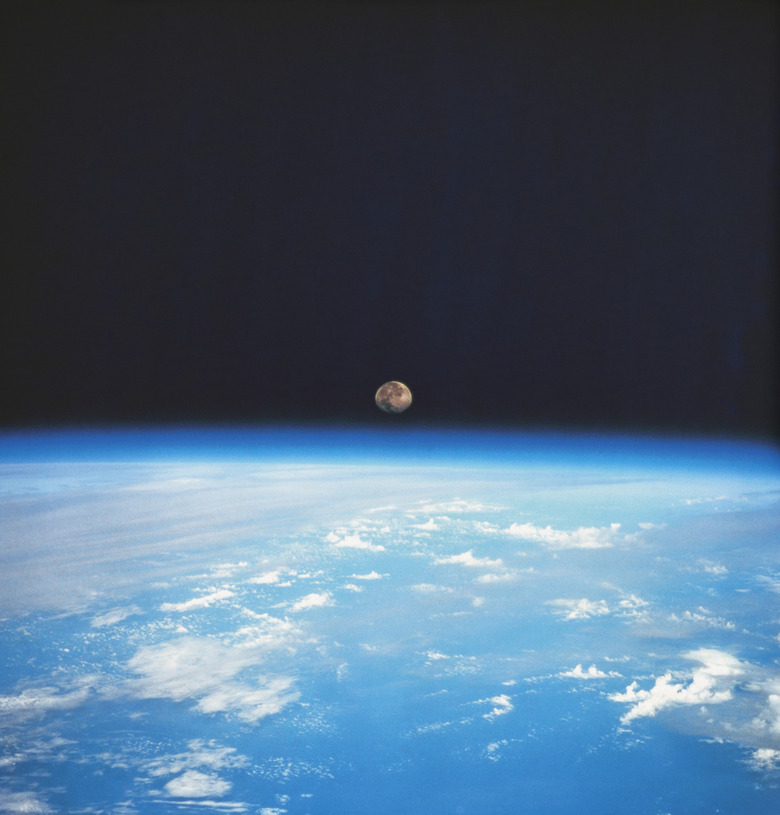What Happens To Air Pressure As You Move From The Troposphere To The Thermosphere?
Water vapor, oxygen, nitrogen and other gases combine to create a mixture that makes life possible. These gases reside in five layers stacked vertically above the planet. Even though you don't feel the weight of the layers pressing upon you, molecules and atoms in those layers exert a force that scientists call pressure. Air pressure in the lowest layer, or troposphere, is much greater than the air pressure in the thermosphere, which sits on the edge of space.
Air Pressure Fundamentals
Air Pressure Fundamentals
As the National Weather Service reports, air pressure is considerable if you sum the forces that molecules in all the atmospheric layers exert. In addition to dropping with altitude, air pressure can vary when a container heats up. Heat Increases molecular energy, which in turn causes molecules to exert more force on the container's boundary. Adding more molecules to a container also increases air pressure since there will be more molecules colliding with each other. Molecules in a layer can exert pressure in any direction.
Important Atmospheric Layers
Important Atmospheric Layers
You're probably most familiar with the troposphere because it's the one you live in. This layer, composed mostly of oxygen and nitrogen molecules, extends to an altitude of 8 to 15 kilometers (4.8 to 9.3 miles) depending on your latitude. All the planet's weather occurs within the troposphere. The stratosphere and mesosphere rise above the troposphere, with the mesophere's upper edge reaching 80 kilometers (49.7 miles). The thermosphere sits above the mesosphere, where the air is much thinner. Temperatures in the thermosphere can climb to 2,000 degrees Celsius (3,632 degrees Fahrenheit).
Pressure Vs. Altitude
Pressure Vs. Altitude
Pressure in the troposphere varies depending on several factors. For instance, if you live at a higher altitude, the pressure will be less than when you travel to lower altitudes. Pressure also changes as weather patterns move through areas. The standard air pressure at sea level is 14.7 pounds per square inch, or about 100 kilopascals. Air pressure is so minimal at the top of the thermosphere that an air molecule can travel large distances before hitting another air molecule.
Air Pressure and You
Air Pressure and You
Air pressure drops about 3.5 millibars per 30 meters (100 feet) as altitude increases. This drop is more pronounced if the air is cold because cold air is denser than warm air. A millibar is a unit of measure that's equivalent to about 0.0145 pounds per square inch. Air pressure is important because you cannot survive if pressure falls too low. At 16,764 meters (55,000 feet), your body's water vapor appears to boil. Above 19,812 meters (65,000 feet), you'll need protective equipment to stay alive.
References
Cite This Article
MLA
Lee, Kevin. "What Happens To Air Pressure As You Move From The Troposphere To The Thermosphere?" sciencing.com, https://www.sciencing.com/happens-air-pressure-move-troposphere-thermosphere-21767/. 9 March 2018.
APA
Lee, Kevin. (2018, March 9). What Happens To Air Pressure As You Move From The Troposphere To The Thermosphere?. sciencing.com. Retrieved from https://www.sciencing.com/happens-air-pressure-move-troposphere-thermosphere-21767/
Chicago
Lee, Kevin. What Happens To Air Pressure As You Move From The Troposphere To The Thermosphere? last modified March 24, 2022. https://www.sciencing.com/happens-air-pressure-move-troposphere-thermosphere-21767/
